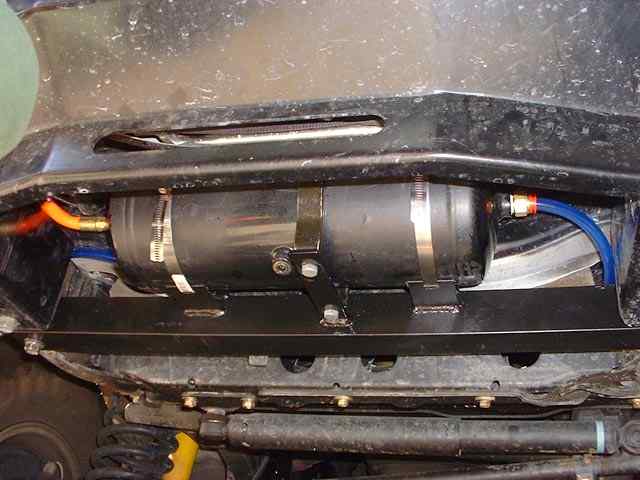Looking to add a 2.5g air tank to my Wit's End York OBA system. It is rated to 200 psi and would probably be kept at 135 psi or so. Had planned to mount it under the driver side step but it looks more complicated to design a bracket and was hoping not to drill into any of the frame and just use existing mounts.
This led me to the front between the frame behind the bumper and just in front of the paperclip - where I guess a winch would be mounted. There are plenty of available tapped holes and the parallel frame will make fabricating a plate easier. I am limited to an angle grinder, drill and hack saw for tools but it should be doable. The only thing I am unsure of is whether or not a compressed tank in the front of the vehicle and just in front of the radiator is a good idea in the event of an accident. I have seen others mount it there but they had a bullbar for added protection. I am running a stock front bumper. I also have the tire under the vehicle so that space isn't an option.
but it should be doable. The only thing I am unsure of is whether or not a compressed tank in the front of the vehicle and just in front of the radiator is a good idea in the event of an accident. I have seen others mount it there but they had a bullbar for added protection. I am running a stock front bumper. I also have the tire under the vehicle so that space isn't an option.
So, long background for a simple question - good idea or bad idea to mount an air tank behind a stock front bumper?
This led me to the front between the frame behind the bumper and just in front of the paperclip - where I guess a winch would be mounted. There are plenty of available tapped holes and the parallel frame will make fabricating a plate easier. I am limited to an angle grinder, drill and hack saw for tools
So, long background for a simple question - good idea or bad idea to mount an air tank behind a stock front bumper?



